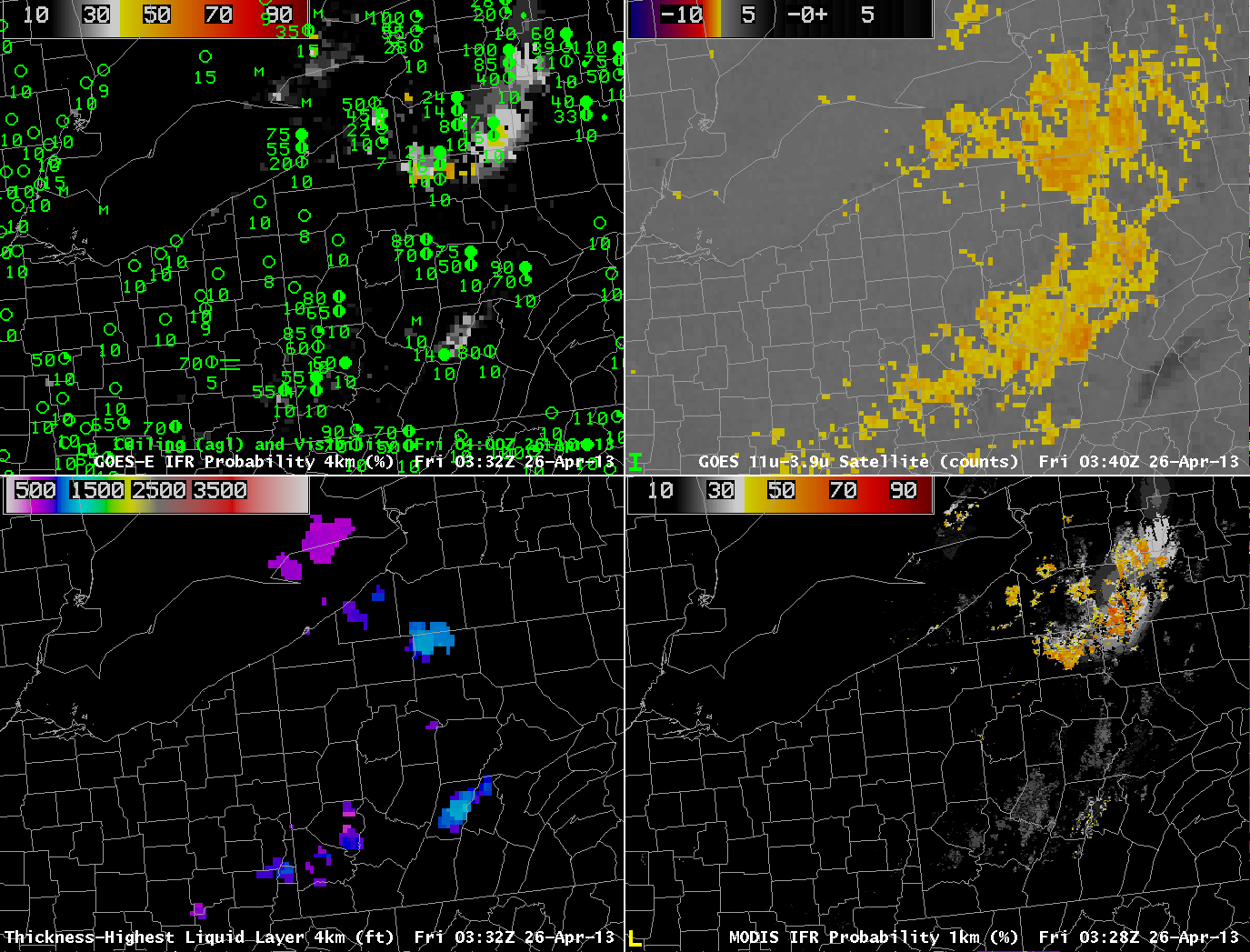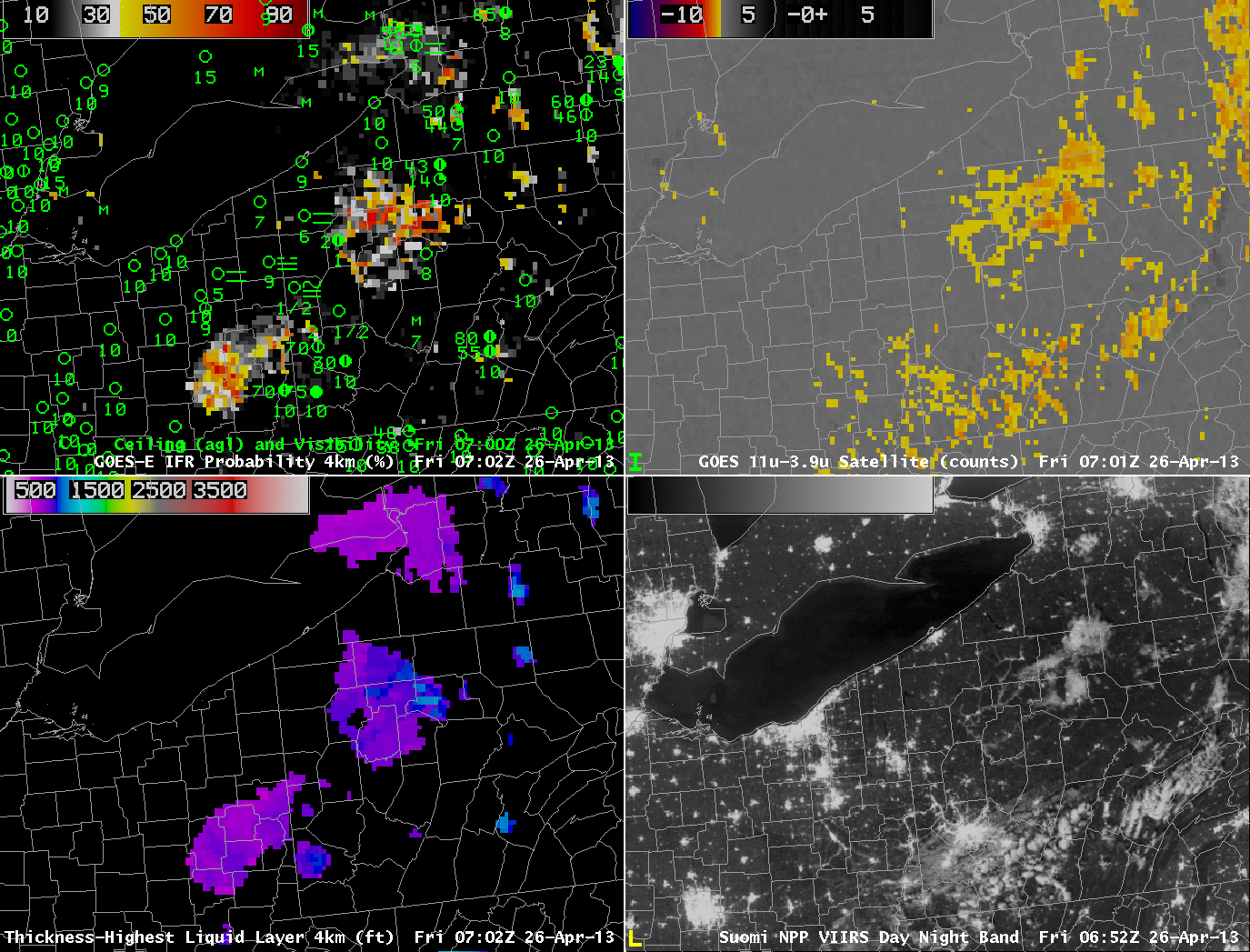 |
| GOES-R IFR Probabilities computed using GOES-East data, hourly from 0400 UTC through 1000 UTC (excluding 0500 UTC), 26 April 2013 |
GOES-R IFR Probabilities show a region over the Allegheny Mountains of northwest Pennsylvania slowly acquiring higher and higher probabilities, as ceilings and visibilities drop. How did this product perform relative to traditional fog detection imagery (the brightness temperature difference product) and relative to data from Polar Orbiting satellites? (The 0500 UTC imagery is excluded from the animation above because Stray Light Contamination in the 3.9 channel was apparent in the IFR probability fields).
The ‘traditional’ method of fog detection that exploits emissivity difference of water clouds at 10.7µm and 3.9 µm, upper right in the figure above, at about 0330 UTC, just as the radiation fog was starting to develop, shows clouds detected over north-central Pennsylvania, but also from Centre County southwestward to the Laurel Highlands and to West Virginia. GOES-based and MODIS-based IFR Probability fields have very low probabilities with these primarily mid-level clouds.
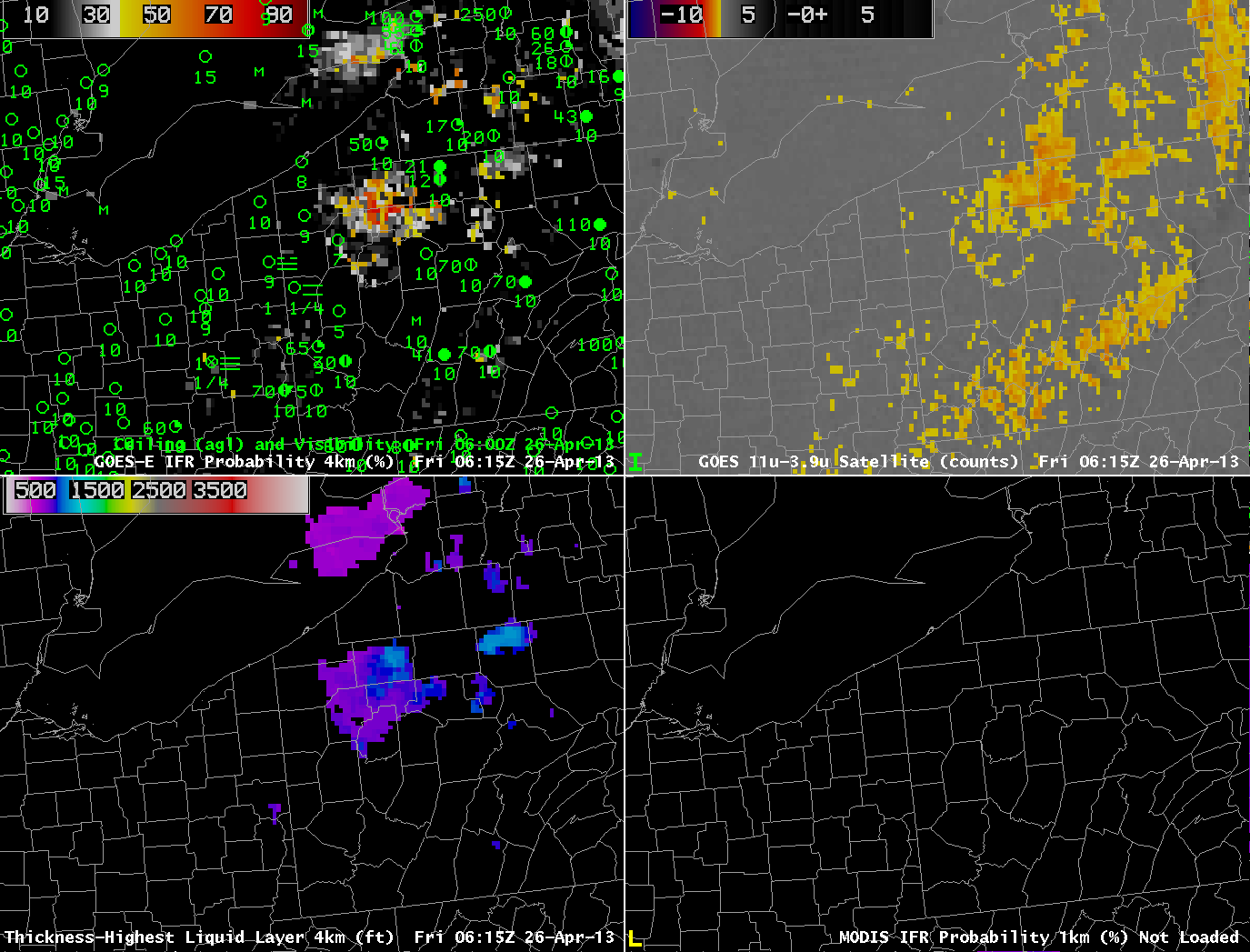 |
| As above, but at 0615 UTC 26 April 2013 |
By 0615 UTC, IFR probabilities continue to increase over north-central Pennsylvania, and they remain low over southern and central Pennsylvania where mid-level clouds are reported (4100-foot ceilings at Johnstown, for example).
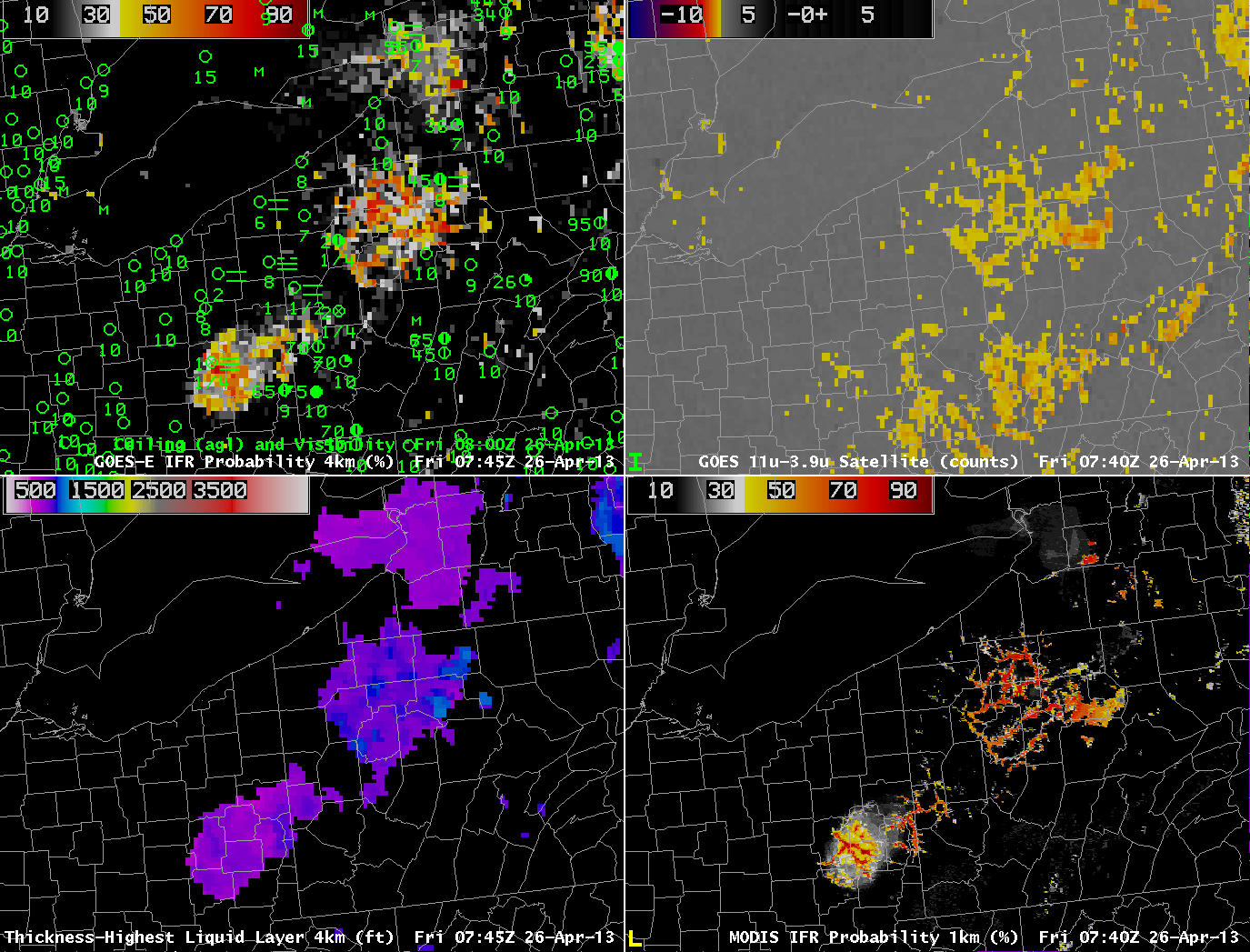 |
| As above, but at 0740 UTC 26 April 2013 |
Another MODIS overpass at 0740 UTC better resolves the character of the developing fog and low stratus over north-central Pennsylvania. Very high IFR probabilities in the MODIS-based fields outline the river valleys of the Allegheny Plateau in north-Central Pennsylvania. GOES-based IFR Probabilities are high, but GOES lacks the resolution to view clearly the individual river valleys.
Suomi/NPP can also give information at high resolution about the evolving fog field. The tendrils of fog developing in the river valleys are evident in the visible imagery created using reflected lunar illumination (A mostly full moon was present the morning of 26 April) and those water-based clouds are also highlighted in the Suomi/NPP Brightness Temperature Difference Field. The clouds over the Laurel Highlands are higher clouds — they are casting shadows visible in the Day/Night band.
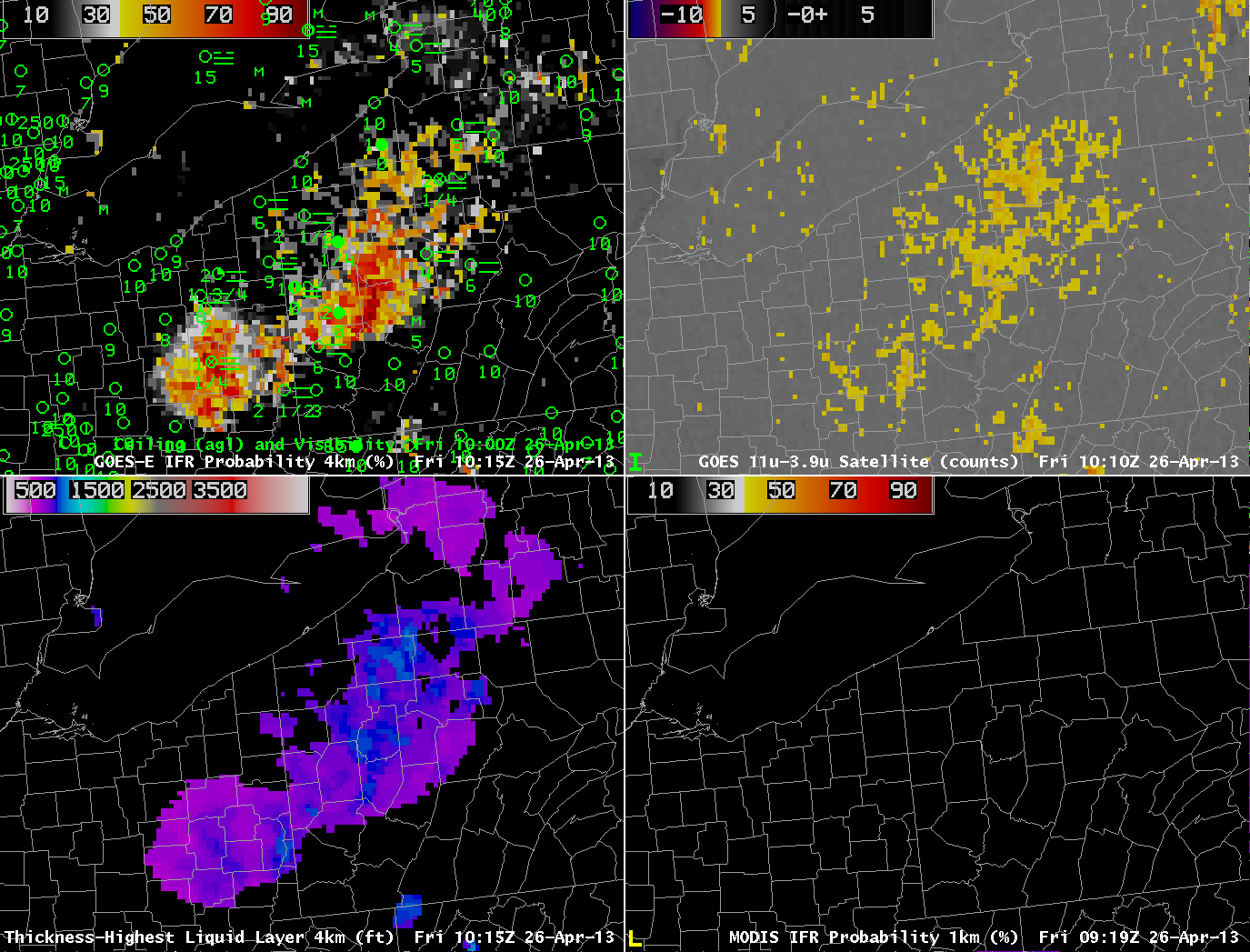 |
| As in the figure above, but for 1015 UTC 26 April 2013 |
The final GOES-R Cloud Thickness field before twilight conditions, above, shows maximum thicknesses of 900 feet over Warren County, Pennsylvania, and around 850 feet over southern Clarion County. According to this link, such a radiation fog will burn off in less than 3 hours after sunrise. The animation below of visible imagery at 1315 and 1402 UTC shows the fog, initially widespread in river valleys at 1315 UTC mostly gone by 1402 UTC.
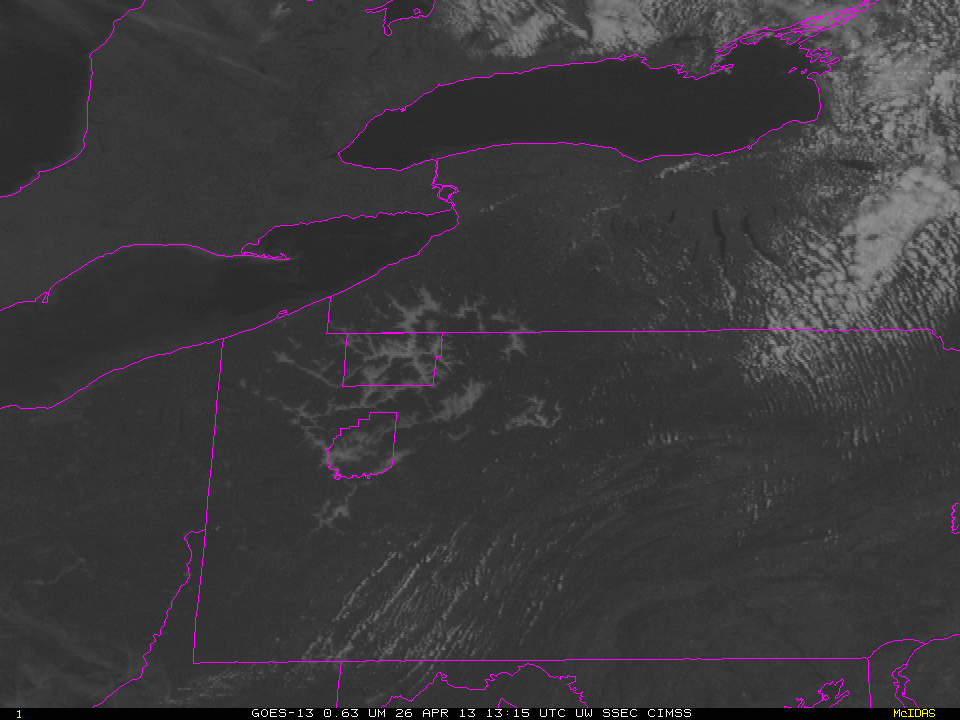 |
| GOES-13 Visible Imagery, 1315 and 1402 UTC, 26 April 2013. Warren and Clarion Counties are highlighted. |

